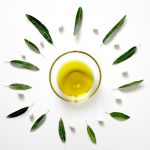Many people struggle with buying produce, as sometimes they do not have the time to go to an organic market. They need to buy produce from the grocery store, and all they see is labels and stickers with different numbers, which do not have a big meaning to them as customers.
We are about to inform you that you have been ignorant: these stickers do tell you much information about the produce you buy. The sticky label you see is actually known as PLU, meaning “price look up” label and it tells you whether the produce was genetically modified, treated with pesticides, or none of these. The labels are put by the store itself, but the numbers you see are not put accidentally. These numbers are assigned by the International Federation for Produce Standards (IFPS).
The mysterious stickers
There are many questions that come out concerning the sticker labels. We will try to answer some of these to clear the mystery.
First, the stickers are made of various materials, including plastic, paper, and vinyl. Interestingly, it is considered that the adhesive on the stickers is a food-grade additive (FDA- approved). Additionally, stickers are of course inedible, but digestible. You won’t choke to death if you accidentally eat one, but you won’t get any nutritional benefits out of it.
Although your stomach may “digest” the sticker, the adhesive has many chemicals such as different polymers and rubber chlorides, so it basically means you are consuming chemicals along with the fruit/vegetable. It seems that it is important to remove them as well as clean the produce after all. In terms of removing the stickers properly, we can help you out. You can use Scotch tape to remove them, or carefully scratch them if you please.
What to be careful about when shopping produce
It is very important to understand the harm pesticides cause to your body, and some produce is full of them. The Environmental Working Group provides a list of the so called The Dirty Dozen and Clean 15 for you on a yearly basis, so that you know if the produce contains pesticides or not. Pesticides are toxic, but farms do really use them. That explains the importance of organic farms and eating organic produce.
But is it always easy to find organic produce? It is when you visit the certified green market that is too far away to reach with your car and you just can’t make it that shopping day. Typical grocery stores usually mix organic and non-organic produce, and you simply can’t decide which apple looks more organic than the rest, if there really is an organic apple in the store.
It isn’t so bad sometimes, as the store has divided the produce and has a whole section of organic food/produce where you can find your desired apple! Sometimes, however, you still have to struggle with finding the right organic section in the store, as they are not always visible and big. Luckily for you, there is an end to the frustration. As we mentioned above, you can easily identify organic food with identifying the PLU code.
How to decode the PLU code
These codes always start with a 3 or a 4. It doesn’t depend on where a fruit is grown, for instance, as it will have the same code given by the IFPS. Different codes of the same produce are given to different varieties, however. For instance, different varieties of banana will have at least 10 different PLU codes.
The codes are always four digits long, with one exception: when there is another specific number preceding the PLU code. For example, papaya can have two codes: 8-4052 or 94052 (with or without a hyphen).This preceding number tells you extra information about the produce.
- When the PLU code is preceded by an 8, the food is GMO:
- When the PLU code is preceded by a 9, the food is organic;
- When the PLU code is not preceded by any number, the food is conventionally-grown.
Basically, you know that organic food’s codes start with a 9, conventionally-grown food’s codes start with a 3 or 4, and the codes that begin with an 8 show a GMO type of food.
Sometimes, the label can also tell the origin of the produce. The US law from 2009 states that stores must notify customers about the country of origin beside the sticker label. This has been shown to be very useful most of the times when people shop for produce.
What is wrong with the PLU coding system?
This coding system has some drawbacks as well. Firstly, the system is not regulated by the government, but it is utterly on voluntary basis, depending only on the needs of business. Secondly, many stores can choose not to put sticker labels on their produce if they don’t want to bother with the whole process. They may use other alternative ways of showing people this information, which makes the whole process unreliable.
GMO food is also a big taboo among people, as the FDA determined that GMOs are the same as the food which isn’t modified by lab scientists. Thus, even if the food is GMO, no label will tell you. Studies do not show that this food is not modified by lab scientists, and this is a big controversial issue people are faced with.
Final advice
Therefore, the best way to deal with this issue is to be very careful when at the market. Try to buy produce with codes starting with a 9 and labeled 100% organic, or buy produce that is labeled GMO-free.



